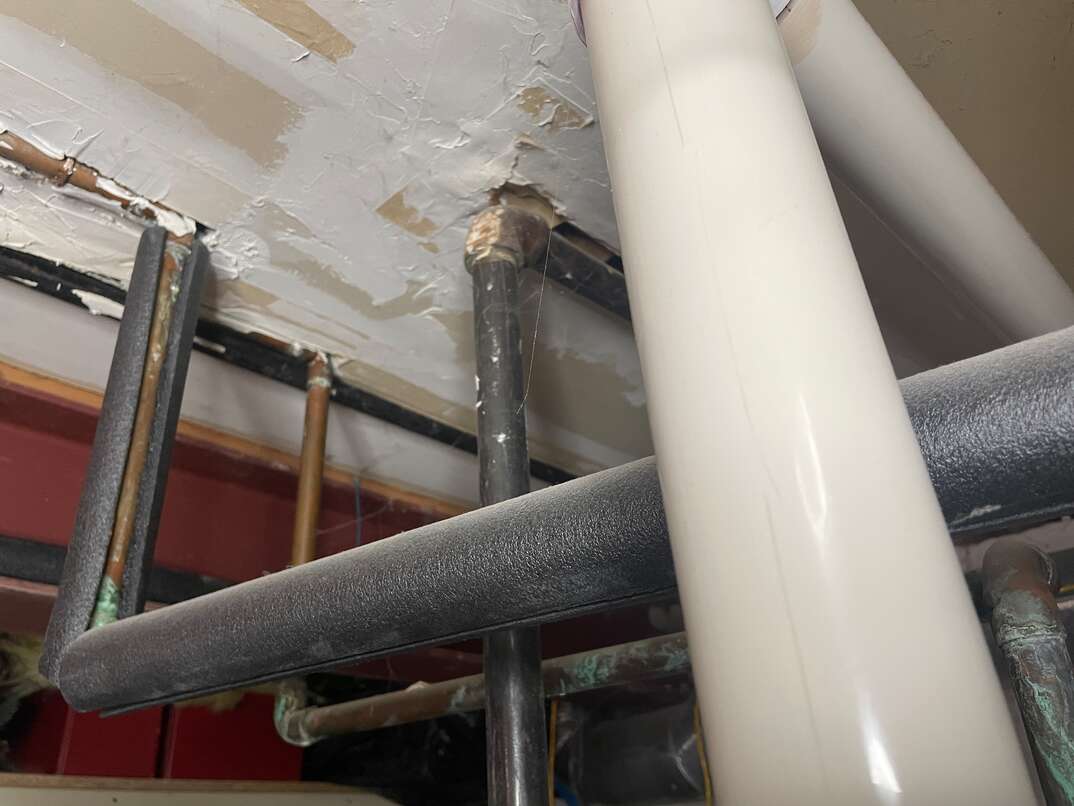- AppliancesElectriciansHVACLandscapingLocksmithPest ControlPlumbingRenovationRoofingT V RepairAll Home Improvement
- Car AccidentClass ActionCorporate LawCriminal DefenseDivorce LawEmployment LawFamily LawFinancial LawLegal AidMedical Injury LawyersMedical MalpracticeReal Estate LawWater Fire RestorationAll Legal
- InvestmentRetirementAll Finance
- Animal InsuranceAutoGeneral InsuranceHealth PolicyHome RentersAll Insurance
- DentalHealth SpecialistsAll Medical
- Animal CareVeterinaryAll Pets
- Auto GlassTowingAll Automotive
How to Prevent Pipes From Freezing During a Power Outage

Water is one of the few substances that expands when it's frozen. When that water is contained in your plumbing pipes, this can cause the pipes to freeze and burst if the temperatures are cold enough for long enough.
When the temperatures start to rise again, and the water melts, this can leave you with a significant leak that may lead to damage to your home, potential mold issues and a high water bill.
How long it takes pipes to freeze without heat or power depends on where you live, how your house is constructed and how cold the temperatures are. It could take a couple of days at just-under-freezing temps for pipes to freeze in a well-insulated house with a basement because the home holds the warmth longer and the pipes are protected in the basement. However, it could take just a few hours for pipes to freeze in a mobile home with no power and sub-zero temps outside.
Prevent Frozen Pipes During a Power Outage With These Tips
The best way to deal with frozen pipes is to be prepared ahead of time. If you know cold weather is coming, and there's potential for a power outage, taking the time to get your pipes ready can prevent freezing and ensure you still have access to water. Here are some strategies that can prevent frozen pipes even if you don't have any electricity or heat.
Set Faucets to Drip
When you see that the forecast calls for colder temps, open up your taps and let them drip slowly. You don't need to let a steady stream run, but a fast drip ensures there's enough water coming out of the pipes to prevent them from freezing. It's important to make sure you open both the cold and hot water taps, as these are separate lines. The most important taps to be aware of are any that run along exterior walls, which commonly include those in bathrooms, kitchens and laundry rooms.
Insulate Pipes
If you live in a manufactured home, don't have a basement or have dealt with frozen pipes before, it can help to take the extra step of insulating your pipes. Again, this is generally only needed in rooms where the plumbing is close to an exterior wall, but it won't hurt to do it in other areas. There are special insulating sleeves that slip around pipes and help keep the cold out. Keep in mind that if you use heat tape, this won't help you in a power outage because it requires electricity to work. In a pinch, you can use duct tape and plastic foam from packing materials or other sources as DIY insulation.
More Related Articles:
- Calling a Plumber? Here Are the 6 Most Common Plumbing Jobs and How Much They Cost
- 6 Ways to Try to Unclog Your Sink Before You Call a Plumber
- What's in My Plumber's Van?
- Here's How Much It Costs to Remodel a Bathroom
- 6 Tips for Hiring a Plumber
Open the Cabinet Doors
One reason bathroom and kitchen pipes are some of the most likely to freeze is that they're usually contained in a vanity or cabinet. These cabinets make it harder for the warmer air in your home to get through to the pipes. So, a simple solution to help keep your pipes from freezing is to open the cabinet doors. Turning up the heat in your home a few degrees can also assist so if the power does go out, you're working with a higher internal temperature to start.
Seal Areas That Are Letting in Cold Air
When the power is out, it's important to conserve the heat in the house and keep the cold air outside. Go through your home and find any areas where you can feel cold air coming in. Common places include electric outlets on exterior walls, windows and exterior doors. You can use insulating film to block drafts from windows, while draft stoppers for doors are cheap and effective. You can even make your own with some long crew socks and rice. There are thin insulation pieces that you can put under your outlet covers for a better seal.
Elocal Editorial Content is for educational and entertainment purposes only. Editorial Content should not be used as a substitute for advice from a licensed professional in your state reviewing your issue. Systems, equipment, issues and circumstances vary. Follow the manufacturer's safety precautions. The opinions, beliefs and viewpoints expressed by the eLocal Editorial Team and other third-party content providers do not necessarily reflect the opinions, beliefs and viewpoints of eLocal or its affiliate companies. Use of the Blog is subject to the
Website Terms and Conditions.The eLocal Editorial Team operates independently of eLocal USA's marketing and sales decisions.

